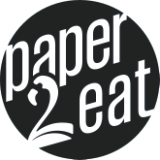
What's the difference between our Wafer Paper and Frosting Sheets (also known as icing sheets)? This question is definitely a recurring one and one we don't expect to stop hearing any time soon. Let's get into a quick overview of some key differences that make these sheets special.
As many of you have probably noticed, both of these types of edible papers are sometimes interchangeable. They can both be used in an edible ink printer for images and can both be cut/shaped into various designs. Which now begs the question...does it really matter which one you use? Absolutely it does! The primary differences to keep in mind here are consistency, opacity, image quality, and use cases.
Consistency & Opacity
Our Frosting Sheets, are mostly made of sugar and have a thicker consistency than our Wafer Paper. Frosting Sheets consist of white icing applied on a plastic backing in order to be of use for consumption-related printing. Frosting Sheets have a smooth texture and are easier to handle and manipulate without breaking. Their consistency can handle moisture much better than Wafer Paper can. Frosting Sheets can absorb some moisture while keeping its shape, which makes them ideal for creating printed designs that are placed directly on top of a cake or other moist desserts. Ours have a slight vanilla taste and it's very subtle, so it wouldn’t overpower or really affect the taste of anything you use them on.
Our Wafer Paper is primarily made out of potato starch, water and oil. It has two sides to it, a smoother side and a rougher side which are both textured. Our Wafer Paper is versatile, pliable and can be transformed in many ways through streaming, cutting etc. It can cannot absorb moisture as well as Frosting Sheets can, and if it gets too wet, it can become soggy and lose its shape. It is best used for decorations that will not be exposed to moisture for long periods, such as cake toppers or flowers. It is also flavorless so it won't affect the taste of any sweets you would use it on. If you'd like to have subtle hints of vanilla when using our Wafer Paper, it's worth noting that we do carry Wafer Paper Vanilla as well. Like the Frosting Sheets, our vanilla-flavored wafer paper will only have a very slight vanilla taste that won’t affect the taste of your creations.
The icing layer that makes up each of our Frosting Sheets is thicker and more opaque than Wafer Paper, which makes it ideal for printing high-resolution images. Wafer Paper on the other hand is noticeable more translucent which makes it less opaque than Frosting Sheets because, as mentioned before, our Wafer Paper is primarily a starch based material. The translucency can also be desirable for some applications where a more translucent effect is desired, such as when creating wafer paper lanterns or other decorative elements. Overall, the opacity of Frosting Sheets and Wafer Paper is an important consideration when choosing between the two. If you need to print high-quality images and designs that require good coverage on surfaces, Frosting Sheets may be the better choice. If you need a more translucent effect or plan to use the paper for delicate or more complex decorative elements, Wafer Paper may be a better option.
It's also important to note that the reason why our Frosting Sheets have a plastic backing and our Wafer Paper sheets do not is because: 1) Frosting Sheets cannot be fed through the printer without that backing. 2) They would also stick together in the zipper bag since they are sugar based. The Wafer Paper sheets, being primarily starch-based, do not need that backing as they cannot stick together and can easily be pulled through the printer without the backing.
Image Quality & Use Cases

The previously mentioned differences in consistency and opacity are major factors in the printing resolutions you should be expecting from each kind of paper. Our Frosting Sheets produce high-quality images with vibrant colors and fine details. They are known for their excellent color saturation, which makes them ideal for printing photographs and other high-resolution images.
On the other hand, Wafer Paper has less vivid and bright colors in image quality when it comes to printing colorful or high-resolution images. This is of course due to the fact that the primarily starch-based nature of our Wafer Paper is more translucent, which directly affects the image quality.

Frosting Sheets are perfect for decorating cakes, cupcakes, cookies, and other baked goods that require a smooth and vibrant finish. They are also ideal for creating prints and designs that can be easily added onto the surface of the cake or baked goods. On the other hand, Wafer Paper is best used for creating delicate and intricate designs that can be placed on top of the cake or baked goods as a decorative element. Wafer Paper is also a popular choice for creating edible cake toppers, such as butterflies, flowers, and a wide array of other decorative elements.
In Summary:

